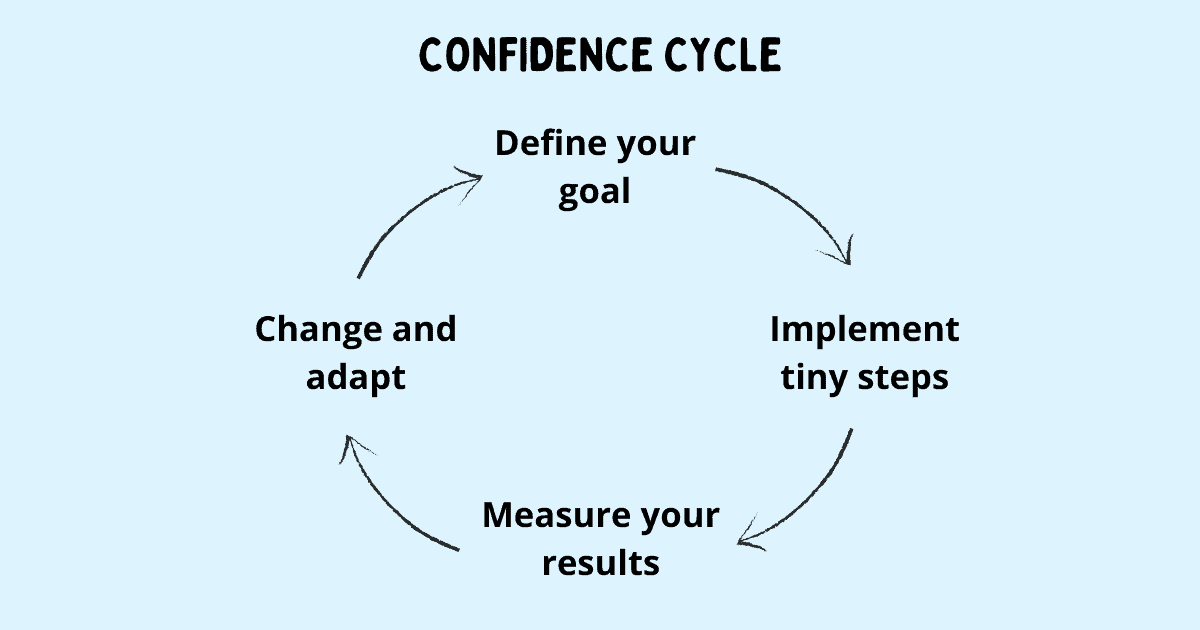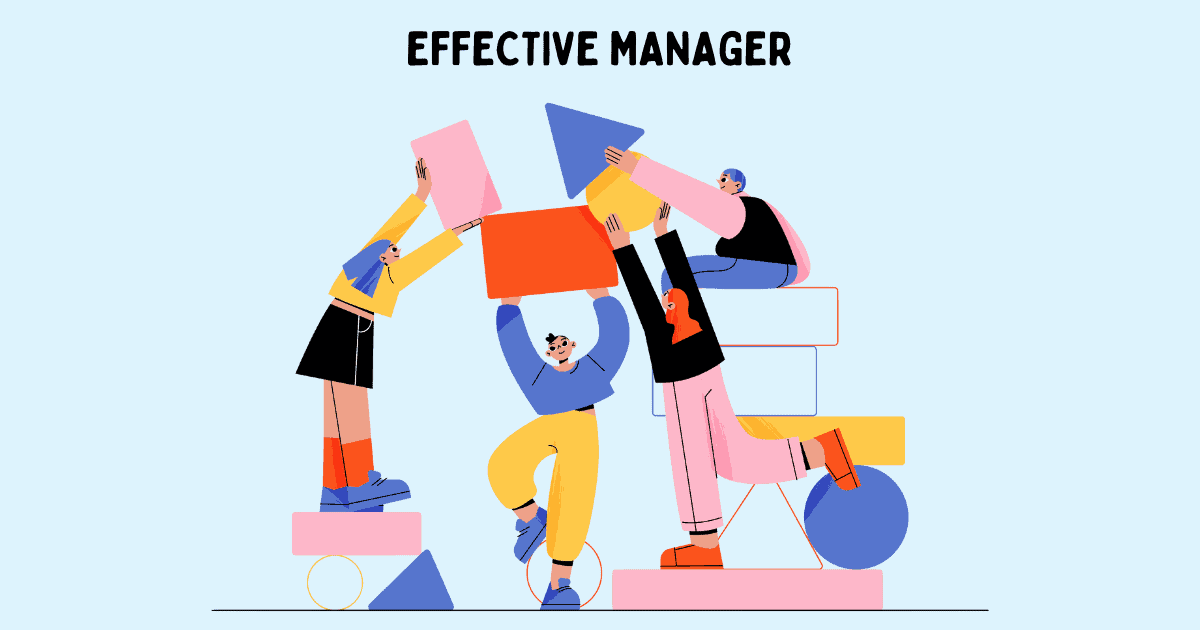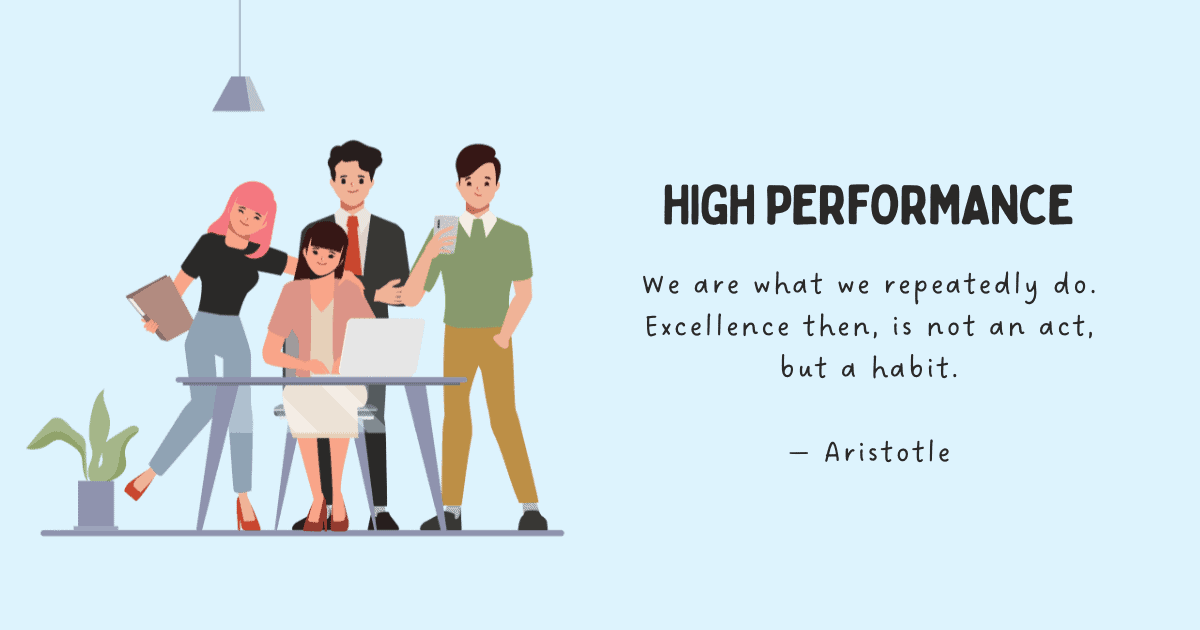Bridge the Confidence Gap: How to Build Confidence That Lasts

Imposter syndrome may cause you to run around with excuses in your head, feel paralyzed with self-doubt, make it hard to muster up the courage to share your opinion, cause you to dwell on mistakes and failures, and play the negative tape in your mind on repeat. When you fall for its thinking traps, you may assume it’s lack of competence that stops you from going after the things you want. But it’s not competence that’s holding you back, it’s your lack of confidence. When you lose sight of belief in yourself, no amount of competence can make you successful. Competence gives you the skills, confidence underpins your ability to actually get things done.
Katty Kay and Claire Shipman, authors of the book The Confidence Code say “Success correlates more closely with confidence than it does with competence.” Research also shows that confidence is more important than ability when it comes to getting ahead. In a 1982 study, psychologists Barry Schlenker and Mark Leary explored this connection between confidence and perceptions of competence. A sample of 48 people was asked to rate the competence of 60 hypothetical individuals facing a tennis tournament. They received two pieces of information: their predicted performance from very poor to very good and their actual performance. After that, they had to rate each hypothetical individual’s competence. Research concluded with this observation: those who made optimistic predictions of their match were perceived by the sample observers as more competent than those with more modest predictions, more so when their claim was in congruence with their performance or when the observers did not have data of their actual performance. In effect, their confidence significantly influenced how others perceived their competence.
This doesn’t mean you fake confidence when you know you won’t perform well. Genuine confidence comes from having realistic evaluations of your skills and abilities without self-deprecation. The question stands: how can you do this when your mind is telling you just the opposite? When it’s constantly asking you to downplay your achievements. When it’s saying you don’t belong. When it’s asking you to give up before you have even begun? How can you be confident when you don’t even believe you’re competent?
We’ll get to it. But first, let’s define confidence.
Dr. Ivan Joseph, an award-winning performance coach who has coached national and world champions and Olympians defines confidence as “the ability or the belief to believe in yourself to accomplish any task, no matter the odds, no matter the difficulty, no matter the adversity. The belief that you can accomplish it.” This is indeed one of the most common ways to describe confidence. In this definition, confidence is a feeling: a feeling that you can do well or succeed at something.
But, there’s another definition of confidence that we often overlook. Derived from the Latin word ‘fidere’ which means “to trust,” confidence is also defined as trust that a chosen course of action is the best or most effective. Put this way, confidence is an action. It’s not a feeling of absolute certainty that you’ll achieve the outcome, an absence of fear from possible failures, or lack of self-doubt from what might possibly go wrong. Rather, the courage to act despite feeling those feelings; trusting yourself to take action no matter the end result. Put this way, confidence is not bailing at the first sign of failure, first challenge, or first encounter with adversity. Confidence is also persistence: the ability to get out there, do the work, and stick with it no matter the difficulty.
When you only think of confidence as a feeling, it can take you down a dark path conjuring up negative thoughts and coming up with all the reasons why you can’t do something. By considering confidence as an action, your mind shifts to effective problem-solving instead of being stuck. It helps you come up with strategies to overcome obstacles, advises you on how to improve and build new skills, and what you can do to learn, grow and develop. Failures and mistakes are no longer disasters. Confidence in your ability to act helps you approach them in a constructive manner making you better prepared to deal with them when they arise.
This is what Russ Harris, an author and a leading authority on stress management calls “The Confidence Gap.” He says people get stuck in it when they hold on to the belief that “I have to feel confident before I can achieve my goals, perform at my peak, do the things I want to do, or behave like the person I want to be.” When already dealing with feelings of unworthiness and self-doubt, if you wait to feel confident before you do what matters, you might have to wait for a very long time. Genuine confidence doesn’t come from lack of fear. It’s built by changing your relationship with fear or as Russ Harris puts it “The actions of confidence come first; the feelings of confidence come later.”
He says that instead of getting caught up in your thoughts and trying to fight them or evaluate if they’re true or false, what matters more is whether they’re helpful. To empower yourself to take action and be who you really want to be, even when your mind is generating all sorts of reasons as to why that can’t happen, ask, if you allow these thoughts to guide your actions:
- Will they help you achieve the results you want?
- Will they help you to be the person you want to be?
- Will they help you to create the life you want to live?
If the answer is ‘no’, then you can recognize that the thought is ‘unhelpful.’
Now that you know that replacing your self-doubt with positive action is a great strategy to build confidence, follow this 3-step process:
- Implement tiny steps
- Measure your results
- Change and adapt
Implement tiny steps
When taking on a new challenge, a new assignment, or doing something for the very first time, a wave of self-doubt is unavoidable. Thinking about the outcome or the end result can stop you from getting started. The sheer volume and complexity of the task combined with the possibility of a failure make it all the more harder. The path to reach your destination may not be clear yet, but you can get there through a series of tiny steps. Tiny steps require breaking down your goal into small, daily actions where each step takes you closer to the task.
For example:
- To give a presentation, practice speaking out loud in front of a mirror for a few days. Next, practice in front of a friend or a family member. Next, do it with your team. Keep increasing the challenge till you get to a point where giving a presentation seems natural.
- To write a book, start with writing 100 words daily. Increase the daily count from 100 to 200 to 500 to 1000 to 2000 gradually. Get feedback on your first draft from people you trust. Make edits. Repeat the process with others in your network.
- To negotiate a deal, practice negotiating in daily life with your kids, spouse, manager, or team members. Next, practice the actual deal using role play with a team member or someone who’s known to be good at negotiating. Do this with multiple coworkers to get experience across varied negotiating styles.
Why are tiny steps useful? Tiny steps turn off your brain’s alarm system that resists and fears change, keeps you engaged and focused on the task in the present, and leads to continual improvement—three essential components to build confidence. These small steps may seem trivial at first but practiced repeatedly they strengthen neural pathways in your brain which makes these small steps easier to perform. What was once daunting becomes second nature. The new connections in your brain create the thrill of the next challenge.
These tiny steps lead to small wins which Charles Duhigg, author of The Power of Habit describes as “Small wins are exactly what they sound like, and are part of how keystone habits create widespread changes. A huge body of research has shown that small wins have enormous power, an influence disproportionate to the accomplishments of the victories themselves…Once a small win has been accomplished, forces are set in motion that favor another small win. Small wins fuel transformative changes by leveraging tiny advantages into patterns that convince people that bigger achievements are within reach.”
Once you have the tiny steps identified, put them into action using what Peter Gollwitzer, psychologist, and researcher on how goals and plans affect cognition, emotion, and behavior, describes as creating implementation intentions—making a plan beforehand about when and where you intend to take action. In other words, when situation x arises, I will perform response y. Research shows that by simply writing down a plan that specifies exactly when and where you intend to engage in action, you are more likely to follow through.
Implementation intention = I will [DO ACTION] at [TIME] in [LOCATION]
For example:
- I will write 100 words for my book from Monday to Saturday at 7 AM at my work desk.
- I will practice speaking the content of my presentation in front of a mirror at 8 PM every night after dinner in my bedroom.
- I will practice negotiating with my team members on Monday and Wednesday at 2 PM right after lunch in a conference room.
What if things don’t go according to plan? Think about all the obstacles that might derail you from taking action and devise an alternative plan to deal with them. This will help you better prepare to adjust to unexpected events and stay on track no matter what comes your way. To do this, design implementation intentions using the “if-then” version.
If [THIS HAPPENS], then I will [DO THIS]
For example:
- If I cannot write 100 words for my book on Monday at 7 AM since I have to attend my son’s school event, then I will do it Monday evening at 8 PM.
- If I cannot practice for my presentation at 8 PM on Thursday since it’s my brother’s birthday, then I will practice the next morning at 6 AM.
- If I cannot practice negotiation skills on Wednesday at 2 PM since there’s an all-hands meeting at the same time, I will do it with my team at 6 PM after the meeting is over.
Breaking down your goals into tiny steps and acting on them using implementation intentions turns them into small wins. Small wins add up to major life goals. What once seemed out of your reach now fits perfectly within your comfort zone. Tiny steps strategy works for any opportunity you want to take on, any challenge you need to face, or any skill you want to master.
Implementation Intentions Worksheet
Develop an action plan to avoid distractions, stay on track and achieve your goals with this template.
Measure your results
Peter Drucker, management guru said, “What’s measured improves.” This is true for everything in life. Whether you are trying to accomplish a goal, build a new skill, or work on a difficult task, without the attitude to learn, adapt and make corrections along the way, you cannot improve. A great way to do this is to implement a strong feedback loop in your process.
Measure how you’re doing every day without judgment—without beating yourself up. When you don’t measure up to your own expectations, don’t engage in ruthless self-criticism as it will discourage improvement. Self-criticism can often backfire by increasing your unhappiness levels and make you procrastinate instead of putting in the effort to achieve your goals. Instead reflect on the results by thinking about the actions you can take:
- What worked well?
- What didn’t work? How can you do it differently next time around?
- What obstacles did you not foresee?
- What feedback do you have from others based on the progress you’ve made?
- What changes do your tiny steps need based on everything you have learned so far?
Amazing Goal Planner
Become your best self by setting and achieving goals in all important areas of your life.
Change and adapt
Finally, nothing good can come out of all this effort if you aren’t willing to change and adapt. You’ve implemented a few tiny steps. You’ve measured your results. Now, don’t back out and delay making changes to your process, even if they seem hard at first. It’s also important that you tweak and adapt to changes around you instead of being inflexible. Look for the signals in your environment. Does something seem off?
For example: Let’s imagine you have been tasked with the responsibility to roll out a new process in your organization. You have finalized a strategy based on data and feedback collected from your team and other functions. You test launch a small part of this strategy with high hopes. But wait, it fails astonishingly. While measuring your results, you discover a key assumption that’s no longer valid. You know what this means. You have to go back to the drawing board and redo the homework. Your mind by this time would have already started playing its self-defeating story “You’re no good” “You screwed up. Everyone is going to find out you’re a fraud.”
That’s just your mind. It’s doing its work. You need to do yours. Take a moment and think about it, what’s better: sticking to a plan that clearly does not work or pulling up your socks and getting back to work? Recognize that you identified a wrong assumption before rolling out the entire strategy. Acknowledge your knowledge and skills that helped you save so much time and effort. Celebrate that it’s not too late. Reframe this minor setback from thinking “I failed” to “I now know for sure what doesn’t work.” Come up with a new strategy and repeat the process: implement tiny changes, measure your results, and change and adapt.
Following this three-step process and paying attention to your progress is the perfect antidote to your feelings of unworthiness and self-doubt. You can see for yourself that everything your mind tells you isn’t true. You have proof: you have taken action. You have learnt. You have made tremendous progress. None of this was possible if you simply believed your judgmental thoughts and decided to do nothing. Confidence comes from getting past your fears by doing the work, not from doing nothing.
This article is an excerpt from my new book Rethink Imposter Syndrome: Build Confidence, Beat Self-Doubt and Succeed.






























Very good clarity
Highly productive
Motivating
Thank you Jagdish.